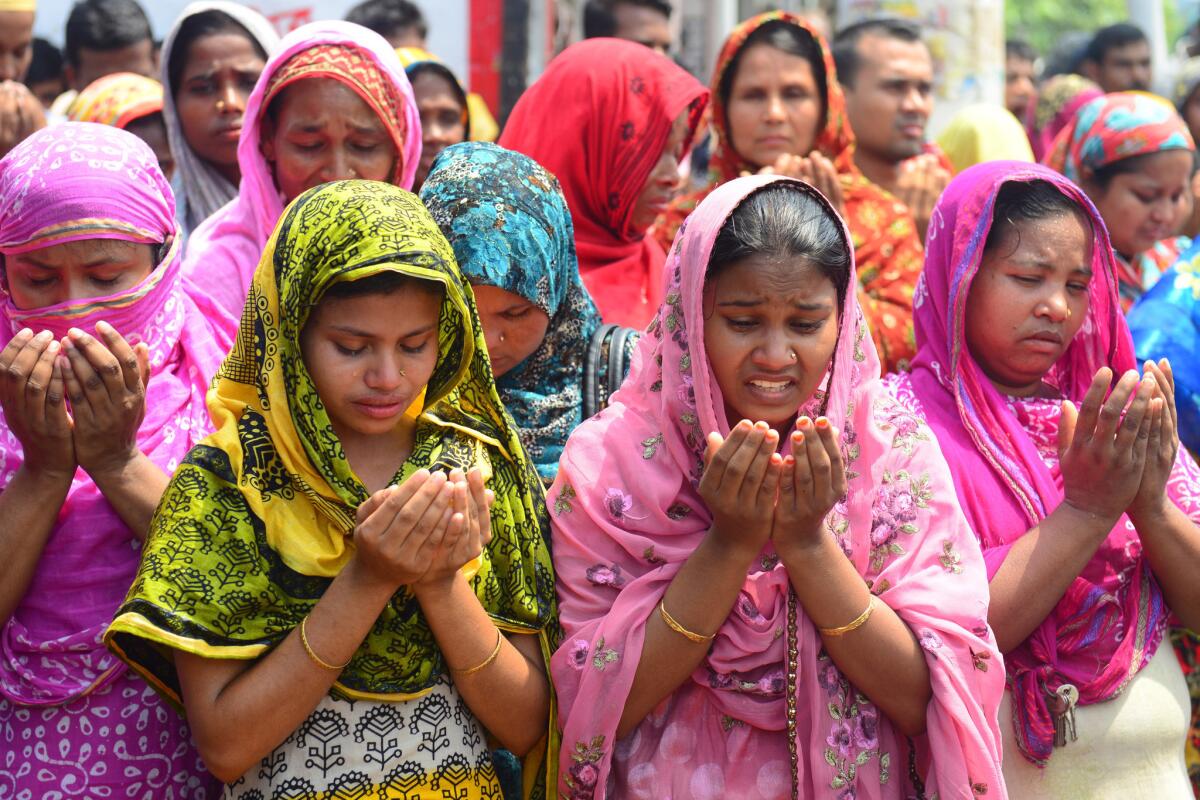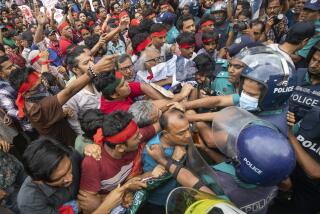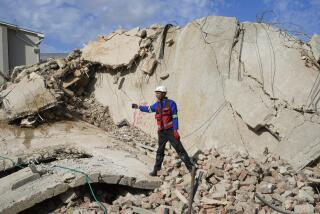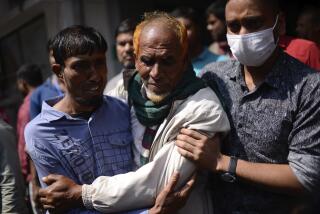Prayer service remembers victims of Bangladesh building collapse

NEW DELHI, India -- Thousands gathered Tuesday in the rubble of the collapsed Rana Plaza garment factory complex in Bangladesh to pray for the 1,127 victims who died in the ruins of the world’s worst apparel industry disaster.
Pictures taken at the Islamic prayer ceremony on the outskirts of the capital of Dhaka showed a rescue worker in yellow headgear affixing a red flag on the factory rubble.
Army crews, who have been working around the clock for almost three weeks, ended their cleanup-and-recovery operation early Tuesday morning, handing over responsibility to civil authorities.
PHOTOS: Bangladesh building collapse
Over 2,400 people were rescued alive, including Friday’s miraculous recovery of a seamstress after 17 days in the rubble, but authorities say they still don’t know how many people were in the structure when it imploded.
The military said it believes that all bodies have been recovered. Nearly 100 people are still listed as missing, however, while about 60 bodies remain unidentified at the morgue and more than 230 corpses -- many battered beyond recognition -- were never claimed, prompting a charity group to bury them. The last body was recovered Sunday.
Relatives of those still unaccounted for formed a procession near the site around noon Tuesday, holding photographs of their loved ones and demanding that they, or at least their bodies, be returned immediately.
Maj. Gen. Chowdhury Hasan Suhrawardy, who’s overseen work at the site in the wake of the collapse, thanked soldiers, firefighters and others involved in the rescue and cleanup work.
He added that troops have compiled a list of about 1,000 survivors, including apparel workers who suffered amputations, that would be handed to the government so that they might be given jobs on a priority basis.
Deputy Minister Jahangir Kabir Nanak told reporters that the prime minister would like to see the site converted into a rehabilitation center for victims of the disaster.
The massive building -- eight stories plus another under construction, all reportedly built without proper permits and using substandard materials -- collapsed on April 24 after residents reported seeing cracks and hearing creaking sounds.
Many workers in the five garment factories in the building had reportedly been ordered to their sewing machines that morning despite the warnings, after being told there wasn’t a problem.
As the global spotlight has intensified on the plight of Bangladesh’s garment workers, many of whom earn the minimum wage of $37 a month, factory owners, foreign brands and the government have come under pressure to reform the nation’s apparel industry, which accounts for 80% of national exports.
On Monday, several Western retailers including Sweden’s H&M; Britain’s Primark and Tesco; the Netherlands’ C&A; and Spain’s Inditex, owner of the Zara chain, said they would require independent safety inspections at factories making their goods and that they would pay for repairs. They also pledged to stop doing business with any factory that refuses to upgrade its facilities.
One of the major holdouts is Wal-Mart, the second-largest clothing producer in Bangladesh, and Gap, which has said it is close to signing such a pledge but is concerned about potential legal liability.
Labor activists warn, however, that the real test will come months and years from now when attention is focused elsewhere, given a history of corruption, weak implementation and intense cost-cutting in the industry.
ALSO:
Deadly factory fire renews outcry in Bangladesh
Obama, Cameron press for diplomatic solution in Syria
In Bangladesh, search for bodies from factory collapse ends
Tanvi Sharma in the New Delhi bureau contributed to this report.
More to Read
Sign up for Essential California
The most important California stories and recommendations in your inbox every morning.
You may occasionally receive promotional content from the Los Angeles Times.










